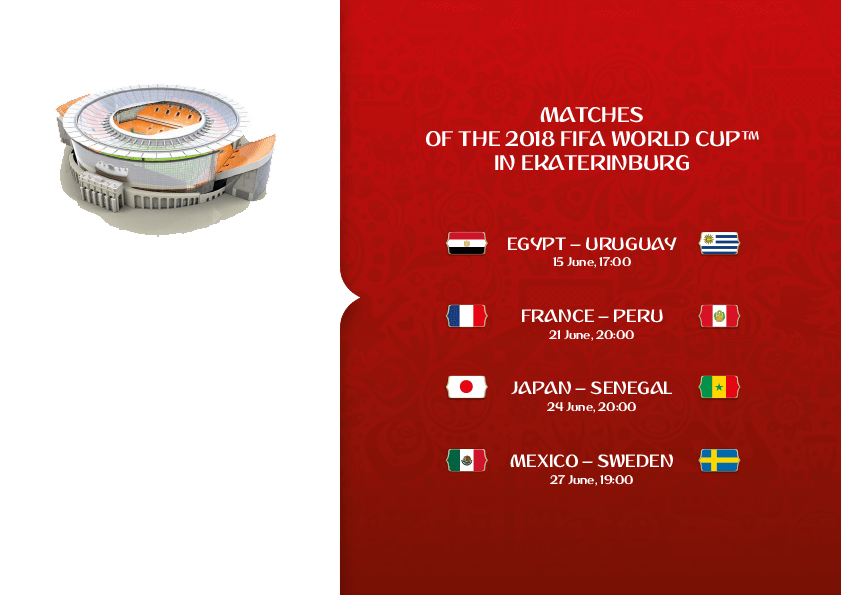
Kind of different
Ekaterinburg Central Stadium
History
Home to one of the country’s oldest football clubs, FC Ural, Ekaterinburg Central Stadium was built in Sverdlovsk (now Ekaterinburg) in 1953. Since then, it has been refurbished on a number of occasions. The last of these refits has been made for the 2018 FIFA World Cup™. On each occasion, however, the stadium’s historical façade remained untouched, as an architectural legacy. Architectural and decorative features typical of Soviet neo-Classicism were used lavishly in the construction of the stands, along with decorative art in the form of sculptures, vases and banners.
The western and eastern entrances to Ekaterinburg Central Stadium are framed by columns with sculptures of a milling machine operator, a female skier, a hunter, a football player, a female athlete with a torch, and a steelmaker.
Design
Yekaterinburg Central Stadium has four stands: two grand stands, and two temporary stands with a steel structure that will be dismantled after the 2018 FIFA World Cup™. The stadium retains its recognisable historical façade, although a roof and temporary stands was installed for Russia 2018.
Ekaterinburg Central Stadium is the only venue for the 2018 World Cup to be held in the Asian part of Russia.
City and legacy
Ekaterinburg is located 17 kilometers away from the border between Europe and Asia, was founded in 1723 as a factory town on the orders of Emperor Peter the Great and named after his wife, future Empress Catherine I. Ekaterinburg is the fourth most-populated city in Russia after Moscow, St. Petersburg and Novosibirsk.
FC Ural will continue to use the stadium for its home games. The venue will also house a fitness center, and the surrounding territory will become a pedestrian area.
User
FK Ural Oblast Swerdlowsk FK Ural Jekaterinburg
Photograph
Status© Host city Ekaterinburg
Status
Refurbishment
Address
Ulitsa Repina 5 620028 Jekaterinburg Russland
Aerial view
Thank you, Google!
Openings
1953, 2011, 2018
Spectator seats
35,000
Videos





